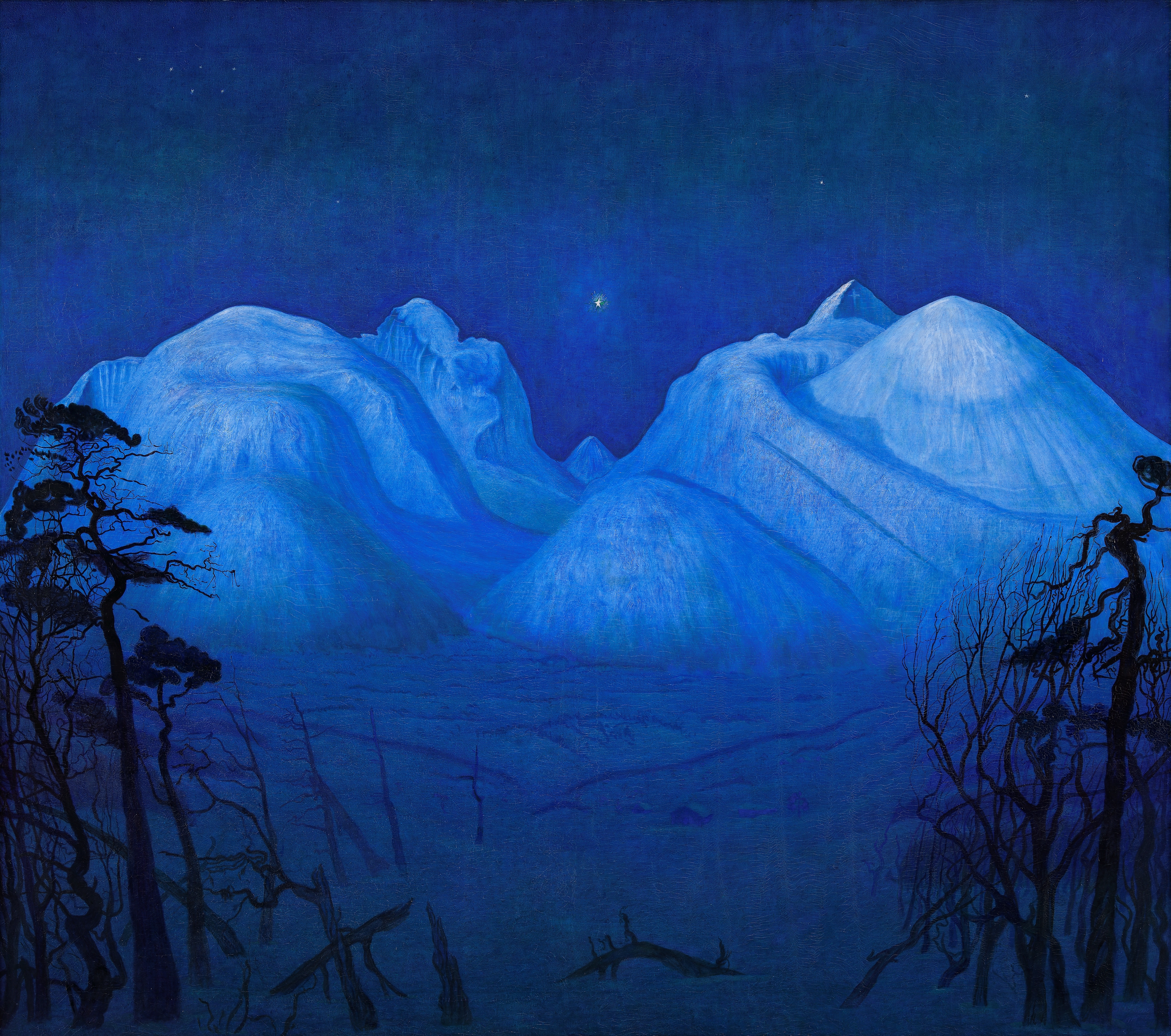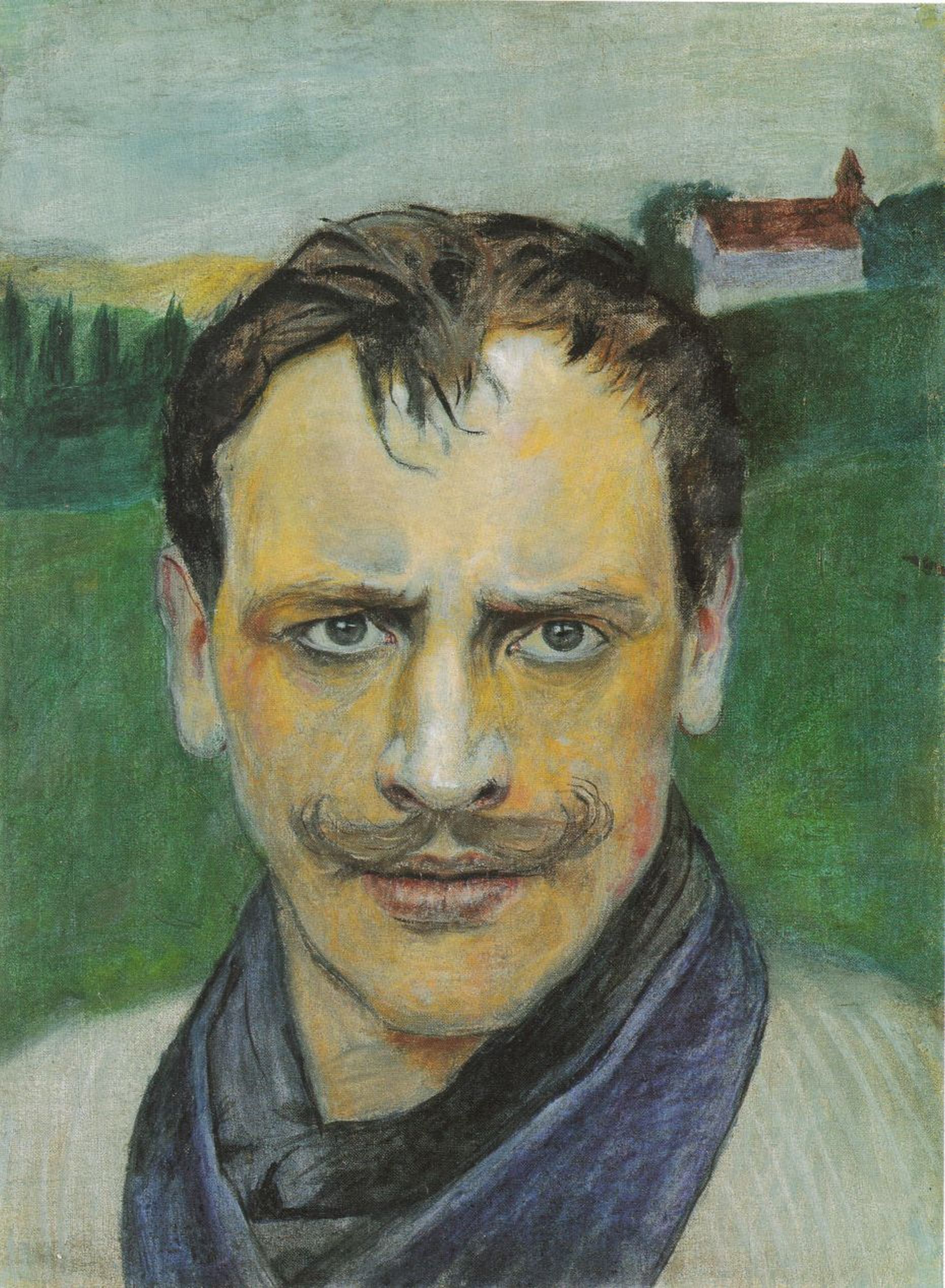A snow-covered mountain massif rises up toward a dark, starry sky in the blue light of winter. The cold, mystical mountain peaks lie far off in the distance; a cross has been superimposed upon one of the peaks, heightening the sense of the sacredness of nature, even as the mountains themselves resemble an icy cathedral. A few bare, crooked trees in the dark foreground frame the mighty view of the mountains. In this desolate, timeless landscape, everything manmade seems tiny and vain.
Harald Sohlberg was inspired to create this picture while skiing in the Rondane mountain range in Easter 1899. He was an excellent skier who liked to explore the Norwegian mountains. While catching his breath one evening, he became enchanted by the extraordinary bluishness of the light. He would later return to Rondane to make sketches and take photos, but it would take him years to find out how to express his intense, almost religious experience of nature. “It was like being beneath the lofty vaults of a cathedral, only a thousand times stronger,” he would later write in a letter about the experience.
As so often in his paintings, Sohlberg has emphasized a symmetrical, well-balanced composition, with a dark foreground serving as a silhouette against a distant landscape and a vast sky; only rarely are people found in his paintings. He worked for a long time on each picture, and his use of thin, translucent layers of paint created an intense depth of colouring and evoked a sense of melancholy. Harald Sohlberg is regarded as one of the leading neo-romantic painters in Norway.
Text: Frithjof Bringager, Nasjonalmuseet.
Such a great painting to start February :)


 Harald Sohlberg
Harald Sohlberg